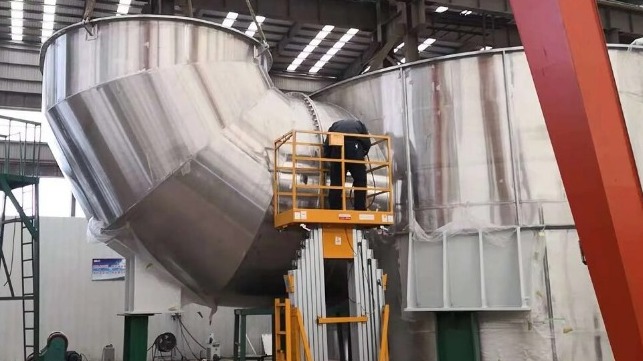Op-Ed: Scrubbers Can Future-Proof Existing Ships

As the shipping industry rallies to remain compliant and profitable while the pressure to decarbonize ramps up, it is tempting to only think about new vessels. But given the finances, timeframes and technologies involved, the existing fleet will remain part of the conversation and cannot be left behind.
The challenge of how to invest in existing vessels in an uncertain future should not be understated. Depending on their operating pattern, layout and technical capabilities, some technologies will not be relevant. Not all vessels can be easily retrofitted for future fuels, for example, and low carbon options may only be speculatively available in the medium and long term on the routes they operate.
In this challenging and uncertain atmosphere, the industry should turn to solutions that it already understands – and that can create a platform for further development.
As a mature technology with a strong return on investment, scrubbers - with the possibility for a carbon capture and storage (CCS) module to be added - enable owners to future-proof their existing assets against the changes in the market and the evolutions we will all face ahead.
Looking at the short-term, owners who invested in scrubbers for IMO 2020 compliance are already enjoying a competitive advantage. Reports throughout 2022 showed that scrubber-fitted ships earned twice as much as those without, with scrubber CAPEX paid back within a few years.
The business case for retrofitting a scrubber today is positive. With the wide and relatively stable spread between high and low sulfur fuels, they continue to offer favorable economics and payback time has been less than two years for several vessel types.
In addition to their fast return on investment, scrubbers can in foreseeable future tackle CO2 with onboard capture and storage, making them a future-proofed investment for achieving marine decarbonization goals.
All this should give the industry optimism that existing solutions can help support the latest regulations, including CII and EEXI, and prepare for carbon pricing further down the road towards 2030 and 2050.
For owners and operators, the key challenge in the more immediate term is finding an experienced partner that can deliver the right solution in good time, at any location, with reliable lifecycle services support.
Optimizing the retrofit timeline
Scrubber installations are complex undertakings that require a knowledgeable, agile partner with vision across the entire value chain. Minimizing off-hire time is critical. Wärtsilä can match design time with the production of equipment and optimize the timing and location on all retrofit phases from initial study to commissioning to minimize vessel downtime. One example is combining commissioning and installation activities to save total off-hire time.
A first 2D layout drawing provides owners with an understanding of the scope of the installation and enables onboard space to be reserved. A full technical feasibility study can then be undertaken before or after contract signing.
Owners typically make most decisions within the first four weeks after contract signing. This is when the equipment, piping and possible tanks are modeled, and owners may consider their preferences, such as tank locations, to ensure the design process is straightforward.
This phase also includes how best to future-proof the installation, for example, the possibilities of CCS-readiness or hybrid functionality. The work required to allow for a CCS add-on is mainly done on the drawings at this stage, but some modifications can be made to the scrubber body. Space will need to be reserved above the scrubber and the funnel may need raising a few meters, and in some cases, it makes sense to do this as early as possible.
In our experience, best practise is having the shipyard do the detailed design to ensure a smooth and fast process that avoids confusion during installation. Co-operation between the basic and detailed designer is important though, and a good scrubber manufacturer will act as a link between all parties. In some cases, it is personal relationships and prudent communication skills more than the contract that can ensure positive, timely outcomes.
Embracing proven technology that can bridge the gap between current and future environmental regulations will enable the industry to move forward optimistically in 2023. With advanced scrubber solutions and by choosing the right partners, owners can be confident they will achieve compliance and remain competitive when working with a partner that has the knowledge and experience in the retrofit segment.
Su Len Quach is a Naval Architect, M.Sc and the Team Manager for Integration Engineering at Wärtsilä Exhaust Treatment. Having been leading up scrubber projects since 2018, including 3 years as Site Manager at a shipyard in Shanghai, he has been directly involved in successful retrofits to over 30 vessels.
The opinions expressed herein are the author's and not necessarily those of The Maritime Executive.

